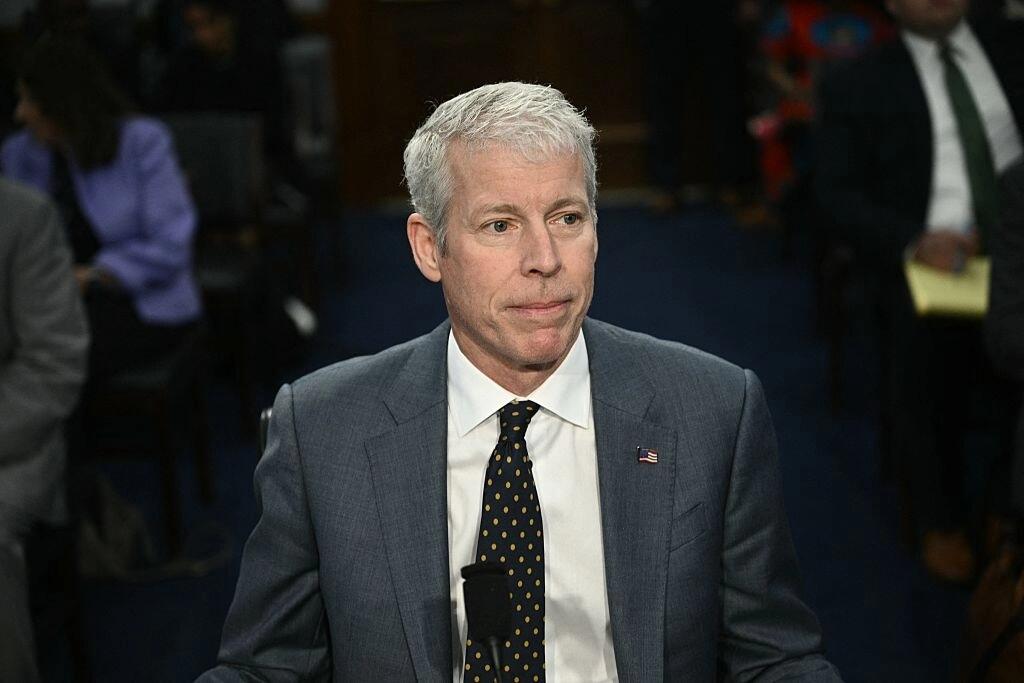A few names are coming into view as people who could lead the Department of Government Efficiency (DOGE), which all signs suggest will have a big influence even with Elon Musk’s departure from his official government work.
The White House insists no single person will lead DOGE and that every Cabinet secretary and host of other officials will continue Musk’s work.
A few individuals stand out, however.
Office of Management and Budget Director Russ Vought is where “all the attention is turning toward,” said Jordan Wood, a former communications aide in Trump’s first term.
“Elon was the necessary disruptor—he bulldozed his way in and got everyone’s attention. But Russ is the operator. He understands how government really works better than just about anyone in the administration. He’s methodical and knows exactly which levers to pull from the inside,” Wood said.
A source close to Trump World also pointed to Vought as the one person who would be at the helm, but noted that DOGE under Musk was not always politically popular.
“DOGE served its purpose – but like much with Trump world, rapid fire approach can sometimes miss the political mark,” the source said.
Musk joined President Trump in the Oval Office for a press conference on Friday to mark his final day as a special government employee, which has a 130 day limit.
“This is not the end of DOGE, but really the beginning,” Musk said, adding that he is confident the team will be able to find $1 trillion in savings.
“I’ll continue to be visiting here and be a friend and adviser to the president,” he added.
Trump also suggested that Musk will continue to be a major figure in his administration, telling reporters, “Elon’s really not leaving – he’s going to be back and forth.”
Musk began Trump’s second term with big plans to cut up to $2 trillion from the federal budget and as of Friday, DOGE estimates that it has saved $175 billion overall due to its cuts. That came with the firings of thousands of federal employees across multiple agencies, big and small.
Meanwhile, Vought had previously advocated for slashing federal spending and putting federal bureaucrats “in trauma” prior to his appointment at OMB. Vought His agency was also at the center of a controversial memo in January that had called for agencies to freeze funding to ensure it aligned with the administration’s priorities.
A new memo this week from the Office of Personnel Management (OPM) that directed agencies to not hire individuals based on their race, sex or religion, directs heads of departments to send reports to OPM and OMB by the end of June. Vought, at the helm of OMB, would receive those reports on recruitment and eliminating such practices the administration deems discriminatory.
White House deputy chief of staff Stephen Miller has also been floated as someone who can take over the work of DOGE.
While one Trump ally pointed to Vought as the likeliest individual to spearhead DOGE’s efforts in Musk’s absence, the source noted Miller would likely seek to keep the federal bureaucracy in check.
Miller, for his part, is a longtime Washington, D.C. figure who worked as a GOP Senate staffer and is well-acquainted with the ins and outs of the federal government. He replied to Musk’s post on X about his time as a special government employee coming to an end to highlight the work.
“The work DOGE has done to eliminate government waste and corruption — the rot embedded deep within Washington — is among the most valuable services ever rendered to government. And the work has only just begun,” Miller said.
Miller’s wife, Katie Miller, was an adviser and spokesperson for Musk at DOGE and was among the few top officials who exited with the Tesla CEO. She is going to work for Musk full-time in the private sector, a source familiar told The Hill, confirming reporting from CNN.
Ultimately, though, the Trump ally argued there was unlikely to be a single new face of DOGE.
Musk’s style and omnipresence would be difficult to replicate, the ally said, and a single leader is likely unnecessary at this point with major cuts to government staffing in particular already implemented.
“As I understand it, Russ would oversee it in more of a team effort way, versus one person being the face,” the Trump ally said.
That’s in line with what press secretary Karoline Leavitt told reporters Thursday in terms of who the next face of DOGE would be. She said that Trump’s entire Cabinet would be tasked with rooting out what they see as waste and fraud.
“The entire Cabinet understands the need to cut government waste, fraud and abuse and each Cabinet secretary at their respective agencies is committed, that’s why they were working hand in hand with Elon Musk and they’ll continue to work with the respective DOGE employees who have onboarded as political appointees at all of the agencies,” she said.
During their work to overhaul the federal workforce, DOGE staff members went into various agencies and some stayed working in those agencies and are embedded in them now. While many Cabinet officials embraced the work of DOGE, there was some pushback from the likes of FBI director Kash Patel who told his staff in February to hold off on replying to outreach from Musk.
Wood argued that embedded DOGE workers could make more of an impact overhauling the government.
“This shift from high-profile disruption to quiet execution could actually make the cuts more effective—and a lot harder to reverse,” Wood said.
To be sure, Musk is a unique figure to replace. He is the richest man in the world who sometimes espouses wild conspiracy theories, has sparked controversy over his alleged drug use, and with him also comes big-ticket checks for high-dollar political fundraising.
The Tesla CEO has compared himself to the Buddha to argue that his efforts to slash the federal budget and workforce will carry on even after he leaves the White House.
“Is Buddha needed for Buddhism?” Musk quipped in a briefing to a small group of reporters last month, when asked who will fill his avoid.
He called DOGE “a way of life” and said converts have been made inside of the administration.
https://thehill.com/homenews/administration/5326532-elon-musk-doge-next-leader/




